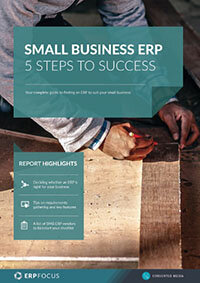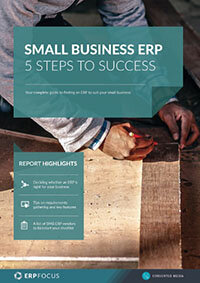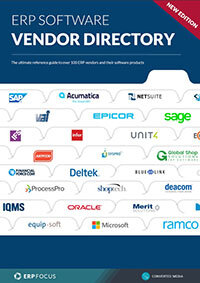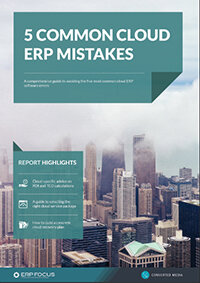How to select a cloud-based ERP for a small business
Enterprise resource planning software. It sounds out of reach for most small businesses. A system reserved for big multinationals with thousands of users and pots of cash lying around. Perhaps it’s because of the name? In fact, more and more small businesses are adopting ERP. Advances in technology (think cloud) bring new levels of productivity at lower costs to businesses of all sizes.
These efficiency-boosting tools aren't out of reach anymore. But choosing the right small business ERP for your company is a challenge. This quick guide will steer you in the right direction.
ERP requirements for small businesses
The abundance of choice can make ERP selection mind-boggling. For small businesses with limited resources, the majority of research and decision-making rests on a small number of shoulders. Defining what exactly you need your ERP to do is the first step. Every business is unique in its challenges so you’ll need to align your strategic goals with your cloud-based ERP requirements:
- Map the processes you need to streamline and prioritize features accordingly
- Look for system features specific to your industry and look for vendors who fit
- Calculate your budget and forecast your ROI
- Decide if you have enough in-house experience or need an independent consultant
There is no ‘one-size-fits-all’ in ERP solution. We have created a survival guide for those looking for guidance, this framework can be applied to any business, large or small.
Cloud vs on-premise ERP
One of the biggest challenges for small businesses looking to invest in new software has been infrastructure. Traditionally, if you didn’t have the right environment or enough hardware to support it, an upgrade would require serious investment. Even if you did have the capital to get enough hardware and on-premise storage to handle an ERP system, your time to ROI could make the whole project untenable.
Check out our ERP software comparison guide to measure which system best fits your business needs
Luckily, the cloud has come to the rescue. Small businesses can store more data and implement new business apps without killing the bottom line. Cloud services are typically sold as a subscription service, making it easier to get underway without huge upfront costs. Cash flow is king for small businesses so fixed costs are preferable to spikes in investment that can leave you vulnerable.
Cloud subscriptions remove barriers for small businesses that want to invest in ERP. But that doesn't mean you should jump in with both feet. Compare vendor prices and models carefully. Look at your growth projections and contract durations on offer. If you expect to grow your user base, make sure you choose a plan that gives you plenty of breathing room. Most plans are priced per user (or on a range of users). You might think that 10 or 20 users are enough today, but what happens in one, two, or five years time?
Shortlisting cloud-based ERPs
Now you know what problems you want your ERP to solve, that cloud is the most likely route and how to create a selection process, it’s time to put the wheels in motion. It probably won’t take long to whittle your options down into a shortlist. Once you have a list of requirements, it’s time to set about requesting proposals (RFPs) to the best-fit vendors.
Free white paper

Small business ERP: five steps to success

Featured white papers
Related articles
-

Top ERP systems for small businesses
Which ERP solutions are best for small business needs? Information on features, scalability and m...
-

CMMC Compliance: What Aerospace and Defense Manufacturers Need to Know
Key insights on CMMC compliance, deadlines, and securing DoD contracts with CMMC 2.0 certificatio...
-

The 10 best construction ERP systems
Include these ERP systems when selecting or comparing construction ERP



